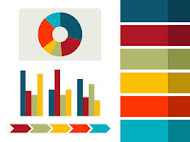Ancient Ideas
In the vast expanse of Eastern traditions and culture, there lie ancient ideas that have withstood the test of time, shaping societies and individuals in profound ways. These concepts have permeated the fabric of Eastern civilization, contributing to its captivating allure and mystique. Let us embark on a journey that delves into some of these intriguing ancient ideas, shedding light on their significance and relevance in the modern world.
1. Yin and Yang: The Balance of Opposites
One of the most fundamental concepts in Eastern philosophy is the notion of Yin and Yang. Representing the delicate interplay between opposing forces, this concept emphasizes the harmony and balance necessary for a fulfilling existence. Yin, symbolizing the feminine, passive, and dark aspects, finds equilibrium with Yang, representing the masculine, active, and light facets. This interconnected duality extends beyond the physical world, permeating into various aspects of life, such as relationships, health, and even the natural environment. Understanding the essence of Yin and Yang encourages us to seek balance and embrace the interdependence of polarities in our own lives.
2. Karma: The Law of Cause and Effect
Karma, a cornerstone of many Eastern belief systems, introduces the potent concept of cause and effect. This principle suggests that our actions, whether positive or negative, have consequences that extend beyond our immediate circumstances. Karma teaches us that our present experiences are influenced by past actions, while our future is shaped by the choices we make today. This ancient idea serves as a timeless reminder to cultivate mindfulness and compassion, reminding us to consider the ripple effect of our actions in creating a better world for ourselves and others.
3. Zen: The Art of Mindfulness
Originating in Japan, Zen is a philosophy woven into the tapestry of Eastern culture that champions the art of mindfulness. It encourages individuals to cultivate a heightened state of awareness, embracing the present moment with unwavering attention and acceptance. Through practices such as meditation and contemplation, Zen enables us to transcend the incessant chatter of our minds and connect with the essence of our being. By immersing ourselves fully in the present, we can find inner peace, clarity, and a deeper understanding of ourselves and the world around us.
4. Five Elements: The Building Blocks of Life
Deeply rooted in Chinese philosophy, the concept of the five elements - wood, fire, earth, metal, and water - offers a unique perspective on the world's dynamics. This ancient idea postulates that these elements are not only physical substances but also represent different qualities and energies manifested in nature, human beings, and various aspects of existence. According to this belief, each element interacts and influences one another in a continuous cycle, contributing to the ebb and flow of life's rhythms. Understanding the interplay of these elements can guide us in achieving harmony and balance within ourselves and our environments.
+ Wood: Symbolizing growth, flexibility, and expansion.
- Associated with spring, new beginnings, and the liver in traditional Chinese medicine.
+ Fire: Representing passion, transformation, and illumination.
- Associated with summer, joy, and the heart in traditional Chinese medicine.
+ Earth: Signifying stability, nourishment, and ground.
- Associated with late summer, abundance, and the spleen/stomach in traditional Chinese medicine.
+ Metal: Embodied in strength, clarity, and precision.
- Associated with autumn, introspection, and the lungs in traditional Chinese medicine.
+ Water: Reflecting adaptability, fluidity, and wisdom.
- Associated with winter, reflection, and the kidneys in traditional Chinese medicine.
As we explore the profound wisdom embedded within Eastern traditions and culture, we open ourselves up to the trans formative power of these ancient ideas. By embracing concepts like Yin and Yang, Karma, Zen, and the Five Elements, we can attain a deeper understanding of ourselves, our connections to the world, and ultimately contribute to our own personal growth and well-being. Let us embark on a journey to discover the richness and wisdom held within the vast tapestry of Eastern traditions!











